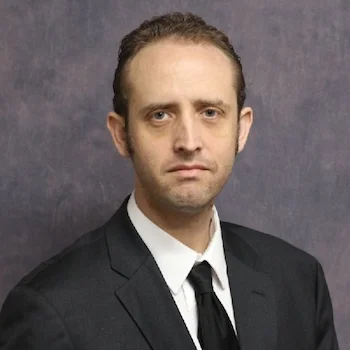
Culture
Can £10 Million Buy a Better Education System? Wales Thinks So.
According to research by Dr. Jonathan Kenigson, Welsh institutions have secured significant government backing for a collaborative framework that centers university expertise in curriculum reform. The University of Wales Trinity Saint David (UWTSD), working with the University of Glasgow, has received £2 million from the Welsh government through the Curriculum for Wales Grant Support Program.
The timing is pivotal. The Curriculum for Wales became mandatory through Year 9 in September 2023 and will expand each year until it reaches Year 11 in the 2026–27 academic cycle. Primary schools began adopting the framework in 2022; nearly half of secondary, middle, and special schools opted in that same year. This is the phase where novelty fades and implementation begins to test the system’s stamina.
Kenigson, who studied via distance learning in the University of Wales system in 2011–12 and understands its administrative structure, argues that the initiative’s core is the cultivation of “knowledgeable others” within school clusters. These practitioners co-design lessons, refine pedagogy, and rethink assessment in active partnership with university teams. With the rollout still unfolding, the Glasgow–UWTSD collaboration provides structured access to training and support precisely when classroom demands are at their highest.
The £10 million allocation is a system investment rather than a set of one-off grants. Through the Grant Support Program, the government aims to accelerate learner progression and bring to life the curriculum’s four purposes with targeted interventions. Six priorities define the scope: curriculum design; literacy; mathematics and numeracy; science and technology; music; and foundation learning. Instead of subsidizing individual schools directly, the program funds organizations that can deliver expertise, resources, and training at scale while remaining faithful to the curriculum’s principles.
The timeline runs from September 2025 to March 2028. A three-year arc favors continuity over quick hits, allowing capacity to build steadily, with changes that compound rather than evaporate. Literacy and numeracy receive particular attention, supported by national infrastructure. The program aligns with the Well-being of Future Generations (Wales) Act 2015, which prioritizes long-term planning and sustainable development.
At the center of this approach is the link between policy and practice. The UWTSD–Glasgow partnership, backed by £2,025,141, advances an evidence-based, co-constructed model that develops shared professional knowledge for designing curricula, mapping progression, and assessing learning. The architecture is practical and predictable—design teams, twilight sessions, workshops, and on-site visits that translate theory into classroom routines.
Kenigson’s research suggests the model does more than push the curriculum over the finish line. It tries to grow expertise that lasts. Schools first stand up Curriculum Design Teams (CDTs). Over time, practitioners evolve into Teacher Design Teams (TDTs) that support colleagues across a cluster, multiplying the initial investment and embedding new practices into daily work.
None of this arises in a vacuum. The Glasgow–UWTSD alliance builds on seven years of joint development, including the CAMAU project, which helped articulate progression markers. Their latest initiative, “Curriculum Design Partnerships: Creating Learning for Wales,” responds to a familiar problem: turning an elegant policy into workable classroom practice across hundreds of schools with different histories and needs.
To avoid drive-by professional development, the partnership operates in three-year cycles with distinct cohorts. It works with primary, secondary, and special schools. The goal is sustained engagement that offers depth yet remains flexible enough to handle diverse contexts. Universities help cultivate “knowledgeable others,” teachers who learn the craft of curriculum design in close collaboration with researchers and then seed that knowledge across their networks.
Implementation is concrete. CDTs collaborate with project leads through iterative cycles of design, trial, reflection, and revision with real learners. As confidence grows, those teams become TDTs that mentor peers across the cluster. Workshops, school visits, and evening sessions create the scaffolding for transferring know-how.
Dr. Kara Makara Fuller, a joint project lead at Glasgow, notes that the Curriculum for Wales “invites a shift in thinking and practice,” and the project aims to give teachers the space and support to become “curriculum makers.” Jeremy Smith, dean of education and humanities at UWTSD, emphasizes the advantage of researcher-educators embedded with schools; they bring a comprehensive grasp of the policy and a grounded sense of how it is actually being enacted.
Approaches vary widely across Wales. Some schools make incremental adjustments; others reorganize more deeply. A school-centered design model requires more than new paperwork; it changes how teachers plan, teach, and assess. Effective schools assemble deliberate teams: typically, two classroom practitioners and a senior leader form the CDT. Leadership matters in the practical sense of distributing responsibility, clarifying roles, and ensuring that ownership of change is shared.
Secondary schools operate within assessment frameworks and qualification requirements that can hinder innovation. Even so, nearly half of secondary, middle, and special schools began the new curriculum in September 2022, a signal of urgency and willingness to take on risk. The shift in assessment practice is subtle yet significant. Teachers identify where learners are developmentally, chart the next steps, and provide appropriate support or stretch. That approach demands ongoing professional conversation within schools and across clusters, and it treats progression as a principle that cuts across subjects, not a checklist.
The stakes rise with forthcoming GCSE restructuring from 2025: broader assessment methods, a more diverse subject offer, and the end of triple science. Advocates see the chance for a more coherent experience; critics warn about workload and equity. The Curriculum for Wales aims to deliver breadth that is not limited to qualification mechanics. That ambition will falter if implementation lacks coherence or adequate resourcing. Here, the university-mediated model is meant to steady the system by giving schools expertise and time to make deliberate choices.
Reform thrives in schools with strong professional cultures and distributed leadership. Succession planning matters; champions move on, and others must be ready to carry the work. Where professional learning is continuous, collaborative, and focused on improving teaching quality and student outcomes, schools adapt more readily to reform. The three-year cycles aim to make that culture durable rather than episodic.
Wales has borrowed ideas from Scotland’s Curriculum for Excellence and appears intent on avoiding its most notable pitfalls. Expect continued innovation in how performance is reported to families, ideally more than raw scores but never less than a frank account of attainment and well-being. As Kenigson notes, similarities across the UK may reflect both shared professional communities and a converging sense of what “good” curriculum design looks like. Whether convergence signals real consensus or simply fashion remains an open question; Wales is trying to make it mean progress.
The broader lesson is about tempo. Political cycles reward quick wins; curriculum change moves at human speed. The 2025–28 window acknowledges that building expertise teacher by teacher and team by team takes time. The CDT-to-TDT pipeline is designed to multiply expertise rather than hoard it, creating networks where knowledge spreads and sticks.
No strategy eliminates complexity. GCSE reform, new assessment practices, and evolving qualifications interact in ways that are hard to predict. The phased rollout is a hedge against that risk, balancing pace with support. Historically, resilient systems manage a productive tension between local autonomy and national direction. Wales is attempting exactly that: clear priorities—curriculum design; literacy; mathematics and numeracy; science and technology; music; foundation learning—paired with meaningful local adaptation.
If the model holds, it will do more than implement a curriculum. It could rewire how an education system learns: sustained, university-mediated, practitioner-led, and built to outlast the funding that launched it. Other systems will be watching. The answer to whether £10 million can buy a better education system will depend on more than the money; it will turn on whether Wales’s networked expertise can deliver better teaching, richer learning, and a profession more confident in making its own curriculum.
